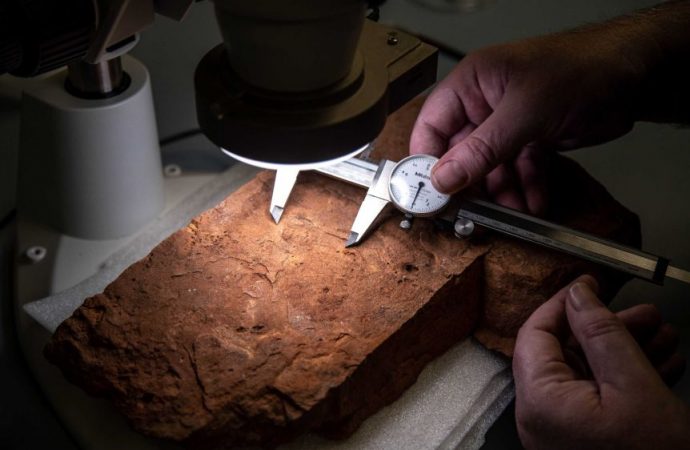Patrick Nelson did not know exactly what he was looking at, but he knew it was special.
Source: abc News
“I’d been out there for a few hours, I was going to come back to my car for a peanut butter sandwich, and as I started heading back to my car I thought ‘this really is a bit different, I’m going to collect it’,” he said.
Mr Nelson was in a remote part of Central Australia called the Amadeus Basin, south of Alice Springs, doing what he does most weekends — amateur fossil hunting.
“It was about three centimetres long, a little bit like a tadpole, quite weathered. It was also intact. Usually you just find bits of creatures,” he said.

The find
For two years, Mr Nelson had been emailing Adam Yates from the Megafauna Central museum in Alice Springs photos of his finds.
“My jaw just dropped, he’s really actually found something,” Dr Yates said.
Mr Nelson had found a 460-million-year-old arthropod fossil that had never been seen in Central Australia.

Arthropods still exist today — spiders, shrimp, crabs, and scorpions are all arthropods.
“People find plenty of fossilised arthropods called trilobites around here, but this was the first non-trilobite arthropod found,” Dr Yates said.
“We know it’s a marine arthropod from 460 million years ago, long before there was megafauna and dinosaurs, any animals on land.”
Dr Yates said the find would fill in a very important gap in fossil records.
“We don’t know what type of arthropod it is. We know it definitely isn’t a trilobite, but there are a few contenders,” he said.
“Whatever it is, it’s going to be a first for the Northern Territory and probably a first for Australia.”

Amateurs welcome
Central Australia is known for its megafauna, but Dr Yates said that the vast, sparsely populated landscapes of the Northern Territory mean that there is a huge amount left to be found.
“We are a small institution with a small staff and a small budget so we certainly can’t be exploring all of it,” Dr Yates said.

He said that citizen scientists were essential to the museum’s work.
“Without interested, educated and enthusiastic amateurs like Patrick we wouldn’t make half the discoveries that get made. This is a phenomenal landscape,” Dr Yates said.
It was a love of this landscape that first drew Mr Nelson to palaeontology.
“The bush and the landscape in Central Australia is broadly fantastic,” Mr Nelson said.
“Everything from the ranges to the clay pans to the plants here tell a story. I wanted to be more literate in the landscape here.”
He said Dr Yates gave him his start, pointing him to the appropriate scientific literature so that he could get started.
“I usually do a little bit of homework and make an educated guess about where I might find something,” Mr Nelson said.
“On that day I thought I might find something. But not this. It’s very exciting.”
Source: abc News

































Leave a Comment
You must be logged in to post a comment.